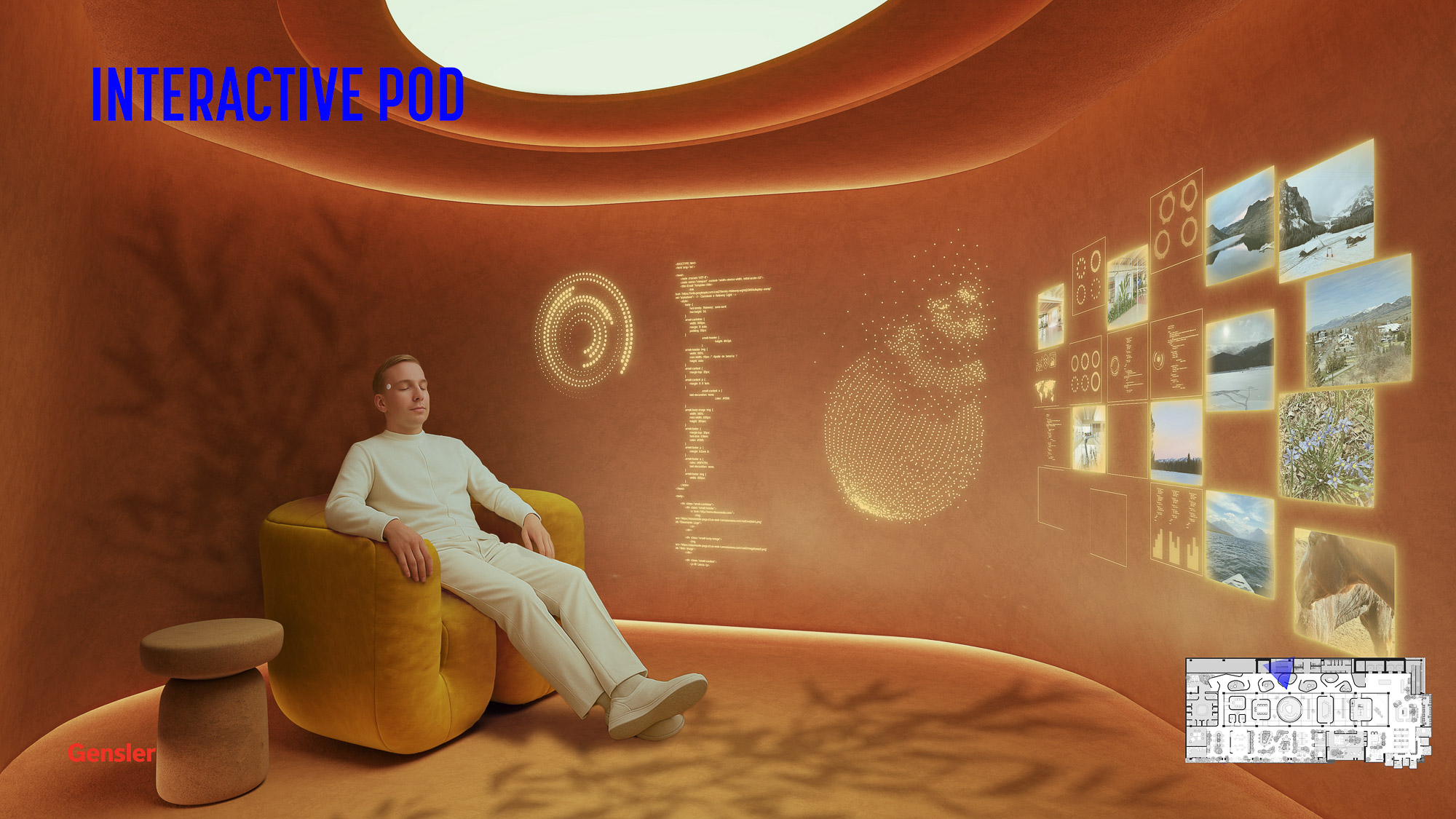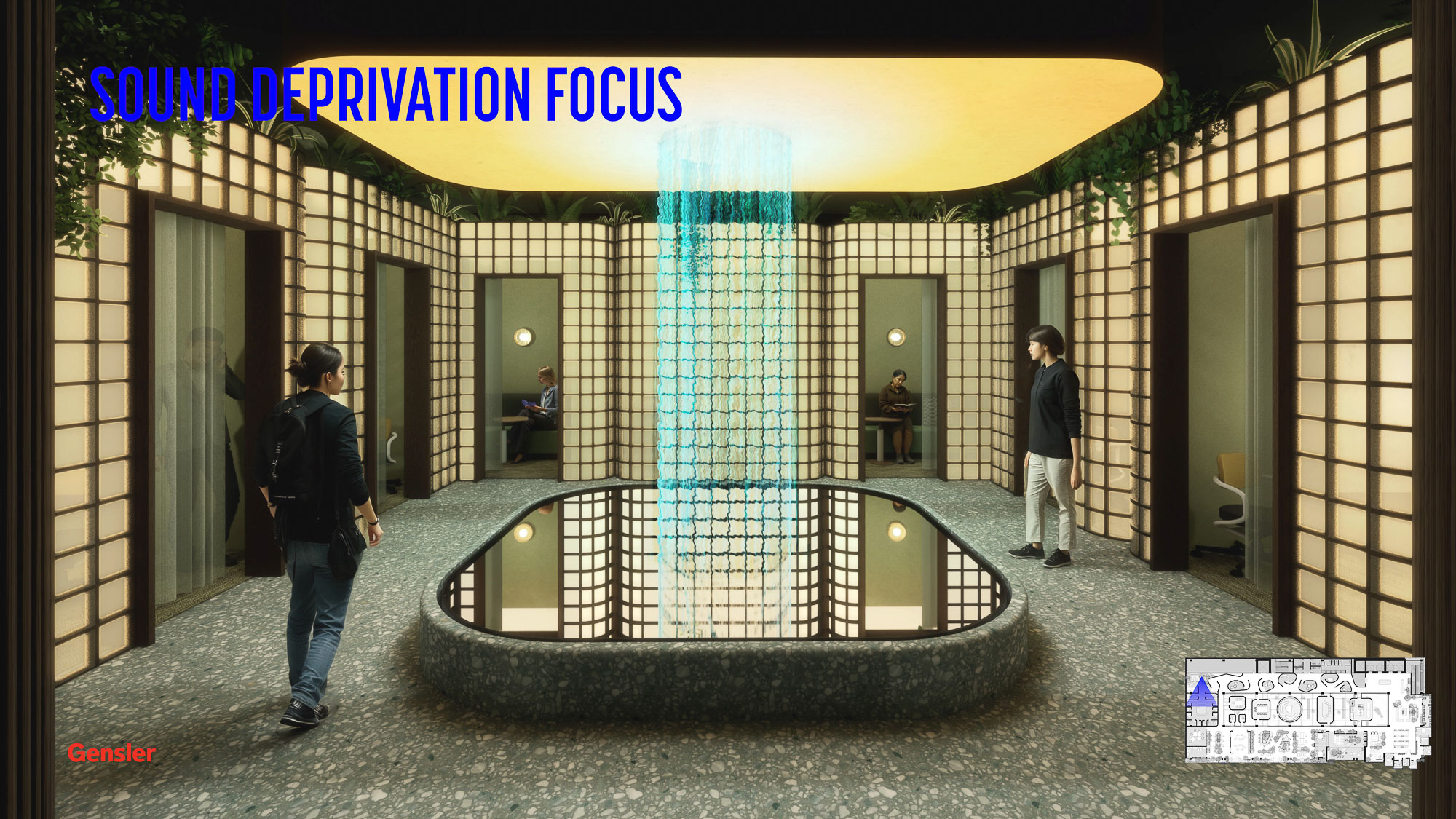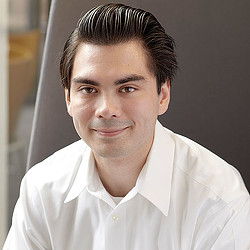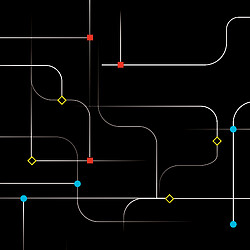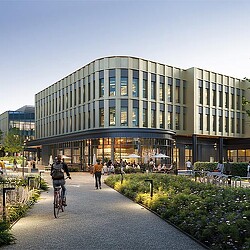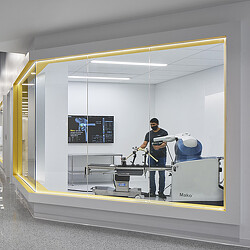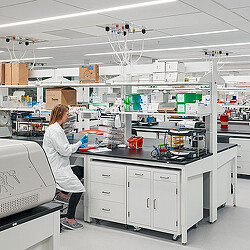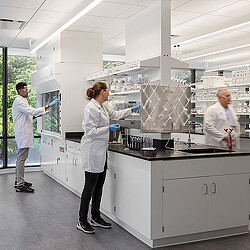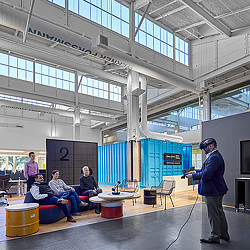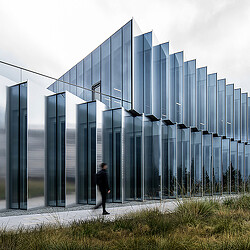NEXT NEXT: Redefining Science Work for the AI and Machine Era
Our new concept looks at how AI and automation are redefining the science workplace and reshaping the future of labs.

AI, robotics, and digital technologies are revolutionizing life sciences, changing the ways that researchers and scientists innovate and collaborate. These technologies aren’t just transforming operations — they’re reinventing the very environments that fuel discovery.
A few years ago, Gensler introduced NEXT, a vision for the lab building of the future. Now, our new concept, NEXT NEXT, takes that idea further, with a focus on how AI and automation are redefining the science workplace itself.
The Lab Landscape
Life sciences real estate is in flux, as labs transform from a traditional footprint to one biased to robotics, automation, and an ecosystem of tech enablers. This shift requires new thinking as traditional scientific teams must morph. Biotech morphs to “techbio” — where traditional science culture merges with tech workers, inventing a new type of hybrid culture. Biotech companies aren’t just competing for lab space — they’re competing for people.
AI and data science professionals are now in high demand, but many labs and research environments haven’t adapted to this evolution. With lab leasing down and oversupply rising in key markets, cities that design flexible, purpose-built environments for this evolving workforce are best positioned to lead.
Introducing NEXT NEXT
The NEXT NEXT concept explores how design can help companies to embrace a future enabled by automation systems tied to AI, and how this requires a mindset to attract, retain, and empower talent in an era where science, technology, and culture are converging.
To tackle this challenge, we assembled a cross-disciplinary global task force of experts from our global Sciences, Workplace Interiors, Technology, Hospitality, and Strategy practices to study how AI-driven research and automation will transform lab environments. The team’s year-long research initiative identified five key forces driving the next generation of lab design:
- The race for tech and AI talent across the sciences sector.
- The ways that AI/machine learning is altering space needs.
- Automated and autonomous labs redefining infrastructure needs.
- Rule-based AI models leveraging curated scientific data portfolios that are driving future discovery.
- A new kind of knowledge worker — one who must learn, unlearn, and relearn.
Building on these insights, the design framework helps clients reimagine labs as talent magnets, create tech-adaptive environments, and bridge the gap between science and technology. As this transformation unfolds across innovation hubs like Boston, the San Francisco Bay Area, London, Houston, and Philadelphia, design is increasingly becoming a key differentiator in attracting top talent that will drive the next wave of innovation.
NEXT NEXT explores the most pressing drivers for this reimagining, specifically focusing on two shifts:
Biotech Becomes TechBio
Labs will transform from a traditional lab footprint to one biased to robotics, automation, and AI enabled tech workers.
Monoculture Becomes Polyculture
The traditional science-based culture will transform into a fusion of science and tech talent, inventing a new type of hybrid culture.
We’ve distilled these shifts into two distinct design ideas: Co-Location, a prospective vision for humans and machines working together, and Trans-Location, a hyper-mechanized yet fiercely human lab for the future.
Co-Location: Where Humans and Machines Share Space
Co-Location envisions the near future — where scientists, technologists, and machines work side by side. These hybrid environments blend physical and digital research, creating flexible workplaces that evolve as AI capabilities expand. We can see this realized in several ways:
- Elastic Transformation
- The New Shoreline
- Ecophilia

As AI and automation reshape research, wet labs are shrinking while digital and collaborative spaces expand. Our Compression Lab model explores new ratios — 50/50, 40/60, even 30/70 — to reflect the rise of dry labs, robotic zones, maker spaces, machine shop, and workplace collaboration space types.
In practice, the workplace flips. Instead of rows of open desks and enclosed meeting rooms, teams work in open zones while individuals retreat to private rooms for focus. The goal isn’t just productivity — it’s connection.

In other words, the lab is evolving into a social innovation hub — a place where scientific rigor meets the culture of creativity. For clients, that means better collaboration, stronger retention, and spaces that scale as research models change.
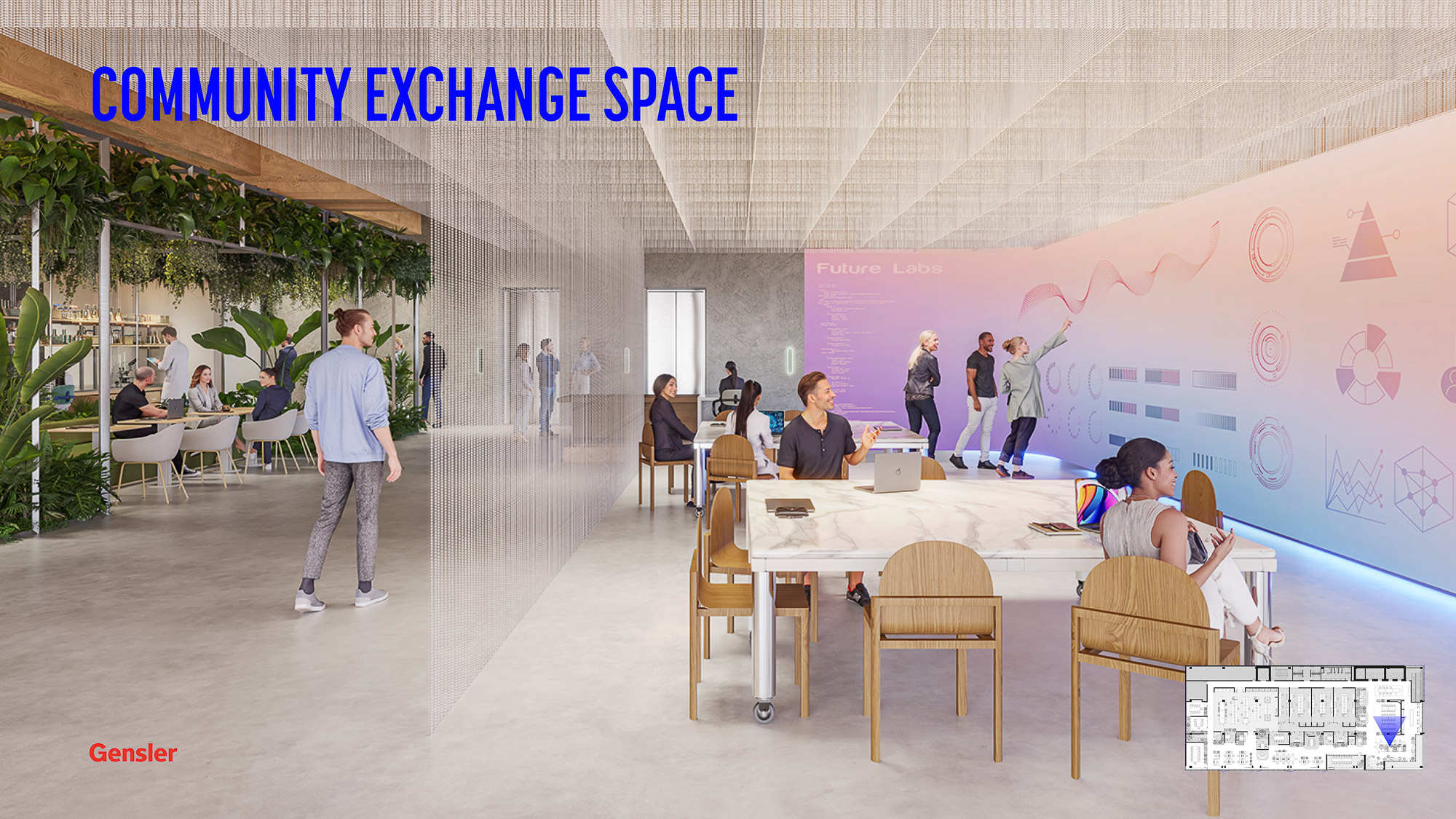
As AI reshapes the future, companies seek spaces that feel warm and inviting, not sterile. Our NEXT NEXT concept envisions environments that merge technology with nature, where greenery wraps the shoreline and workplace, transforming how the space feels and performs.
Trans-Location: Designing for a Radical Future
Trans-Location foresees a more next-generation reality, one where AI is everywhere and immersive tech is part of daily life. In this world, science is no longer isolated. It’s a symphony of humans, machines, and digital intelligence.
NEXT NEXT supports this future with two distinct floors: one for humans, one for machines.
The Human Floor: A Journey Through Experience
This isn’t just a workspace — it’s a sensory-rich journey designed to spark connection, creativity, and well-being. Each space is intentionally different: circular and organic, linear and structured, loud and social, silent and introspective. This diversity reflects the many ways people think, feel, and create.
Our journey through the space begins in the kitchen, the communal hearth where ideas are exchanged over meals and coffee. From there, the rest unfolds like a story:
- Cozy living rooms with soft textures and warm lighting
- Playful zones that invite curiosity
- Interactive pods that encourage hands-on tinkering
- Sound-deprivation rooms for deep focus
- Greenhouses that blur the line between indoors and outdoors
Our team identified several key differentiators that bring this story to life, including maximalism, relational design, and dreamscape design. These differentiators work together to ignite connection, forge relationships, and provoke inventiveness.

Uniformity dulls the senses. NEXT NEXT embraces emotional variety and sensory richness to support the full spectrum of human experience.
The Machine Floor: Precision and Adaptability
Below, the machine floor is optimized for robotics, automation, and AI. It’s efficient, precise, and adaptably designed to support high-tech workflows and digital experimentation. It’s the engine room of the future lab, where synthetic biology, automated testing, and AI-driven discovery unfold.
A Vision for the Future of Science Work
As science and technology continue to converge, NEXT NEXT offers a vision for organizations navigating this transformation. The labs of the future will be:
- Flexible: able to adapt to new tools and team structures.
- Inclusive: designed for diverse disciplines and work styles.
- Human-centered: focused on connection, creativity, and well-being.
We imagined boldly, broke conventions, and challenged the status quo. This mindset is our superpower. We design desire-driven environments where people, machines, and ideas unite into powerful engines of co-creation.
The lab of the future isn’t just smarter. It’s more connected, creative, and human — a place where science, technology, and culture converge to shape what’s next.
Additional contributors include: Kelly Dubisar, Laura Richardson, Nathan Butt, Samantha Lewis, Brooks Cavender, and Hieu Phung.
For media inquiries, email .




